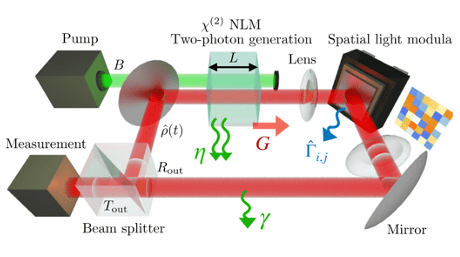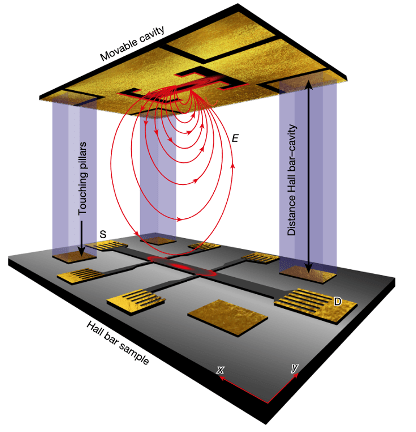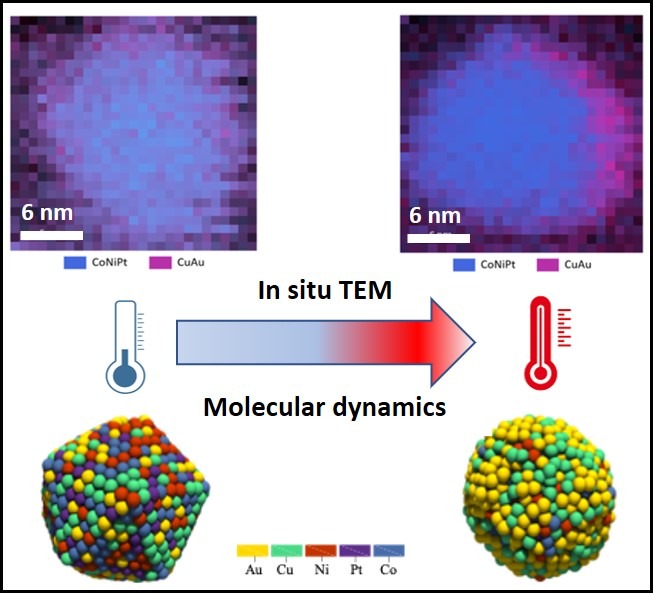A collaboration between the QUAD and DON teams has resulted in the development of a new, high-speed device for detecting Terahertz waves. This sensor combines concepts from electromagnetics and nano-optomechanics.
While visible light plays a prominent role in our lives, it is only a small part of the vast electromagnetic spectrum. The newly developed device at the MPQ laboratory enables the detection of Terahertz waves at room temperature, which are completely invisible to the human eye but have significant applications. For example, these waves allow for seeing through plastic packaging and are useful in medical imaging, while being entirely harmless to living organisms, unlike X-rays. Terahertz waves are situated in the electromagnetic spectrum between radio waves and thermal radiation and are well-known to scientists. However, they have been relatively unexplored due to the lack of user-friendly sources and detectors that operate at room temperature and with sufficient speed. The existing devices developed so far require very low temperatures (approximately -200°C), making their practical use complex.
The device developed at the laboratory is inspired by resonant electrical circuits found in radios or mobile phones but scaled down to micrometer sizes. Additionally, through a nano-fabrication process developed in the laboratory’s cleanroom, a portion of the resonator has been made movable: a nanoscale beam integrated into the resonator becomes a mechanical oscillator. This micro-radio receiver, also known as a “split-ring resonator,” not only captures Terahertz waves but also converts their energy into mechanical action on the nano-beam. This mechanical action is detected by a red laser, which, after being reflected by the beam, is sent to a balanced photodiode. This technique is highly sensitive and can detect extremely small movements, with amplitudes approaching the size of a proton. The combination of this ultra-sensitive optical readout and the nano-optomechanical receiver has enabled the development of the new Terahertz wave detector. With a size of about ten microns, this sensor is much faster than current detectors and, most importantly, operates at room temperature.
A patent has been filed to commercialize this new technology. Due to its rapid industrialization and miniaturization potential, this detector could find applications in non-destructive medical imaging, art object inspection, printed electronic circuits, and even onboard astronomical observation satellites. This collaboration between the QUAD and DON teams was carried out as part of the Labex SEAM project called “Capture.”

Image d’un ensemble des résonateurs TeraHertz optomécaniques obtenue par microscope électronique à balayage
Contact :
yanko.todorov@univ-paris-diderot.fr
Référence :
Optomechanical terahertz detection with single meta-atom resonator, C. Belacel, Y. Todorov, S. Barbieri, D. Gacemi, I. Favero and C. Sirtori, Nature Communications 8, 1578 (2017)
À lire aussi

Emergent Equilibrium in All-Optical Single Quantum-Trajectory Ising Machines
A collaboration between the Theory group at MPQ, CREF Rome, and Sapienza University of Rome has shown that multimode all-optical systems driven by two-photon processes can reach thermal equilibrium at the level of single quantum trajectories. The study is published in...

Cavity-enhanced fractional quantum Hall phases and cavity-modified spin splittings
A collaboration between the Equipe Théorie at MPQ and scientists from ETH Zurich and the Flatiron Institute has demonstrated, both theoretically and experimentally, that giant vacuum fields confined in a split-ring resonator cavity can profoundly alter...

Unravelling the nonlinear generation of designer vortices with dielectric metasurfaces
Researchers from the DON team have demonstrated and analyzed the generation of high-purity second-harmonic vortices with dielectric metasurfaces. These results are published in Light: Science and Applications. Vortex beams are currently drawing a great deal of...

Thermal stability of high-entropy nanoalloys: reality or chimera?
By studying at the atomic scale the thermal behavior of nanoparticles composed of gold, cobalt, copper, nickel and platinum, scientists have revealed that the stability of these so-called high-entropy nanoalloys is much lower than expected, as gold and copper...
